Healthcare LMS Training Center
Centralize, customize, and elevate your healthcare training.
A recent poll suggests that over 50% of employees are overworked. Employee education requires time and resources–both of which are in short supply. It’s a fine balance, and a challenge that administrators like yourself know only too well.
Isn’t it time you spent less time managing and more time helping your employees succeed?
Training Center has hundreds of courses available to Healthicity clients.
Benefits
Unified Learning
Healthicity's all-in-one LMS was designed to integrate with your educational resources. All in one place.
Customized Platform
Personalized just for you and your organization. Tailor the user interface, reporting and training to align with your organization.
Simple to Use
Intuitive user interface is simple to use and just as easy to implement. Never has adoption and motivation been so effortless.
Unparalleled Education
Trusted content created by trusted sources. Your employees can learn from the best by leveraging content created by industry experts.
Training Center Features
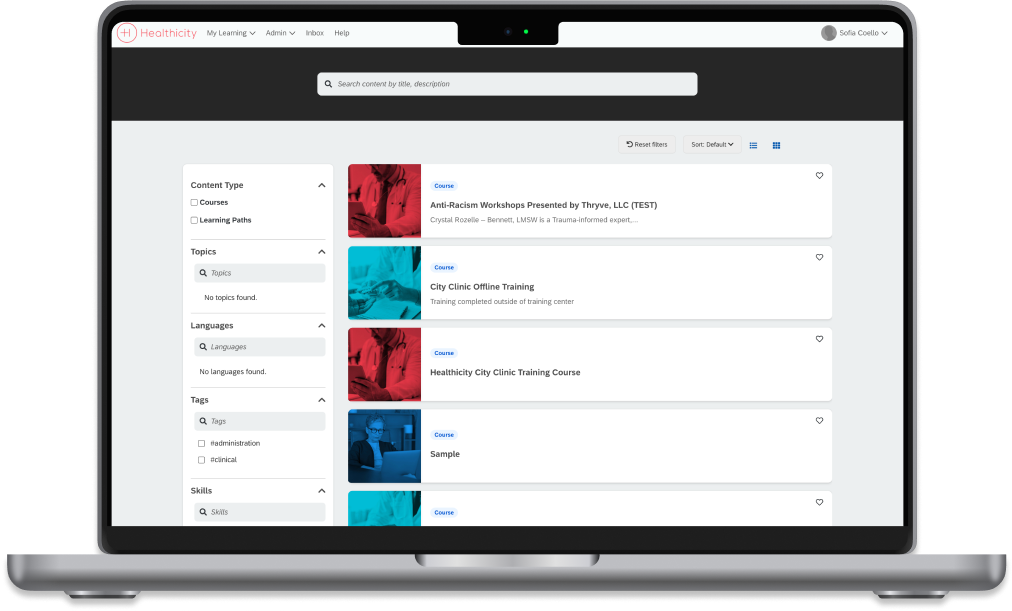
Comprehensive Training
Access a complete library of industry expert-approved training for your every need. You’ll have access to training from anywhere, always.
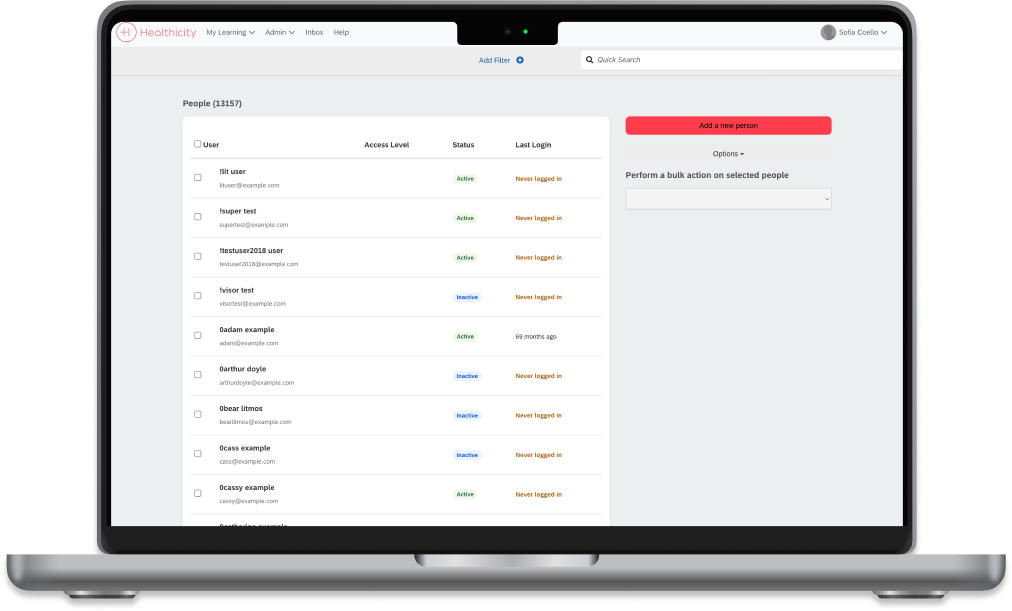
Administrative Control
Manage your courses, employees and their tasks. With broad administrative tools and controls, you can track what matters most: your success.
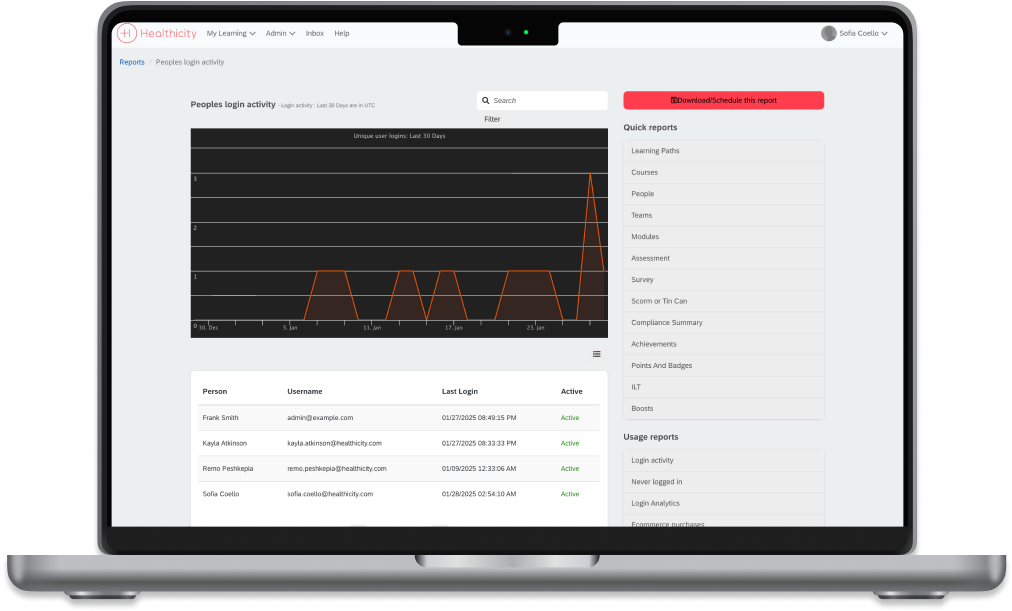
Insightful Reporting
Track the progress of your employees. In-depth reporting allows administrators to drill down into employees and courses.
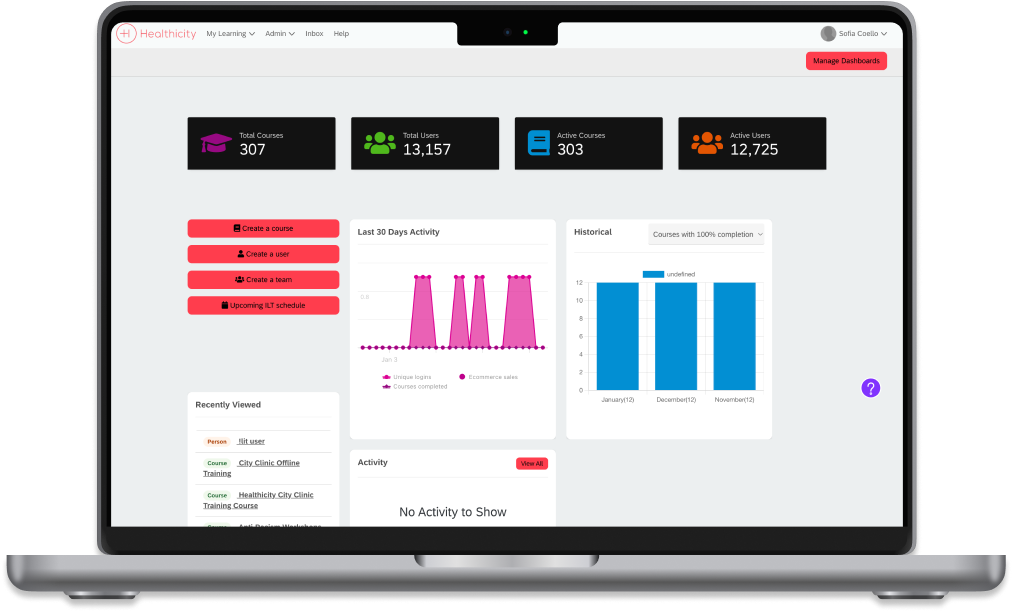
Customized Portal
Leverage enrollment, reporting and purchasing capabilities, all within a single portal. Meet the needs of your organization, then exceed them.
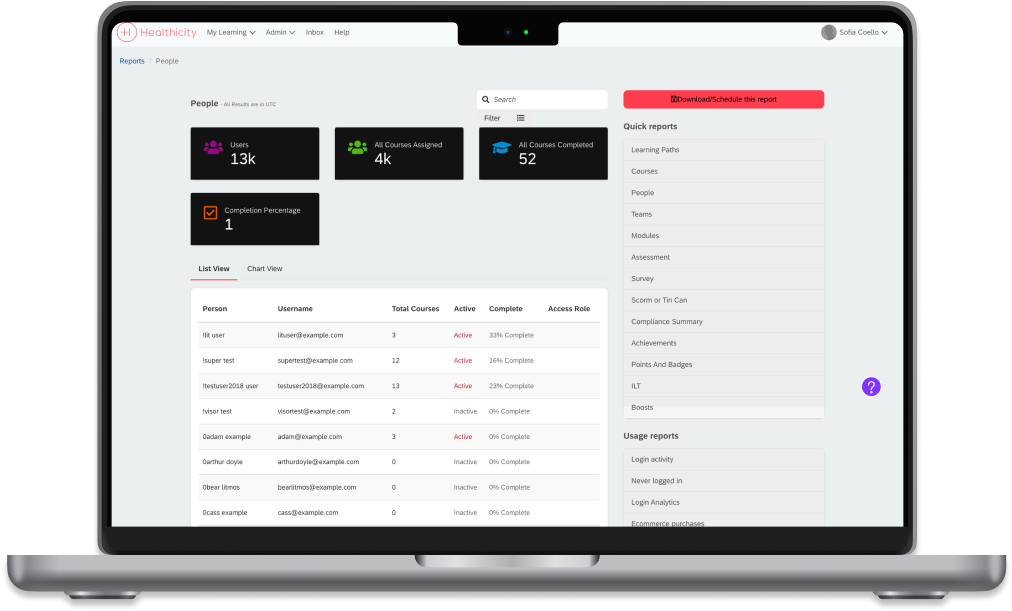
Scalable Learning
Facilitate online, blended and personal learning courses. No matter your approach, you’ll be able monitor each employee’s progress.
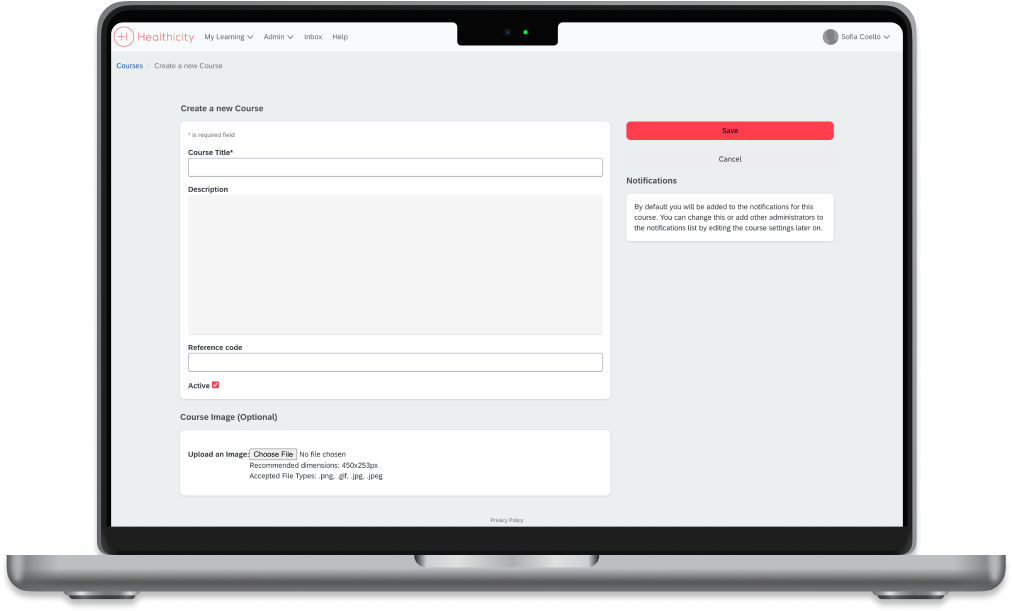
Personalized Courses
Upload your existing courses, or any course you create in-house. Let our Training Center be the center of your training program.
Courses Available
Compliance Manager Essentials includes 20 courses covering the compliance spectrum. Audit Manager includes 34 Auditing-related courses. Additionally, there are hundreds of additional courses available for purchase.
|
Core Compliance Courses |
|
|---|---|
|
Medicare Training: General Compliance Training |
Fire Safety in Healthcare Facilities |
|
Medicare Training: Combating Fraud, Waste, and Abuse |
OSHA Compliance |
|
The Basics of HIPAA Privacy & Security and HITECH |
Patient and Workplace Safety Measures in Healthcare |
| Bloodborne Pathogens and Your Healthcare Organization's Exposure Control Plan 4.0 (US) | Preventing Conflicts of Interest: Ethical Conduct |
| Workplace/Sexual Harassment | Standards of Conduct |
| Compliance Training for Health Plan Board Members | Steps to Minimize Workplace-Related Injuries in Healthcare |
| Bloodborne Pathogens and Your Organization’s Exposure Control Plan | Why Emergency Action Plans Matter for Healthcare |
| Compliance Training for Health Plan Board Members | Workplace / Sexual Harassment - (General) Non-California version |
| Confidentiality Agreements: What is Your Role? | Workplace / Sexual Harassment - California |
| EMTALA and Patient Intake | Workplace Safety - How Employees Can Ensure a Drug-Free Workplace |
| Annual Healthcare Compliance Refresher | Resumen de los estándares de la HIPAA (EEUU) |
| Computer and Information Security Training | |
|
Core Auditing and Coding Courses |
|
|---|---|
| Unlocking the Secrets of Modifier 25: A Comprehensive Guide for Coders | Common Office Procedures |
| The Art of Coding & Auditing Radiation Oncology | Incident-to Guidelines |
| E/M Coding and Other Time-Based Services | Teaching Physician Guidelines |
| An Auditor’s Simple Guide to Infusion Services | Office Visit Guidelines: Time and Prolonged Services |
| Annual Wellness/Medicare Preventative | Primary Care Exception |
| Audit's A to Z: Creating A Successful Audit Program | Modifiers |
| A Rockstar's Guide To Radiation and Oncology Coding | Microlearning: Unlocking the Secrets of Modifier 25 |
| Office Visit Guidelines: MDM | Navigating Telehealth, Medicare, and More in a Post-PHE Healthcare Environment |
|
Office Visit Guidelines: Time and Prolonged Services |
E/M History and ROS |
| Annual Wellness/Medicare Preventative | Chief Complaint, HPI & Status of 3 Chronic |
| 2022 CMS Changes to Reporting Shared Services | Behavioral Health and Psychiatry |
| Coding for Injections and Infusions | Selection of Principal Diagnosis |
| 2023 Coding Updates for Home Health Hospice | |
Explore more Compliance Solutions
Compliance Manager Software
Stay compliant with streamlined incident tracking, effective training, risk assessments, and third-party management—all in Compliance Manager. Simplify compliance and minimize risk with ease.
Compliance Advisory Services
Our compliance experts bring decades of experience to help your organization avoid violations, fines, and revenue loss, ensuring you meet all your compliance goals.
Get expert guidance
Program Administration
Our team offers complete compliance services, from policy development to incident management, providing tailored solutions to simplify regulations and reduce risk.
Achieve compliance with us
SmartLine Incident Reporting
Our AI-powered compliance hotline is here to simplify incident reporting. Anonymously report, auto-transcribe, and alert—all in real-time.
Experience smarter incident reportingEducation & Training
Equip your team with expert-designed compliance training to build confidence, prevent errors, and drive organizational success while reducing risk.
Explore course offerings
